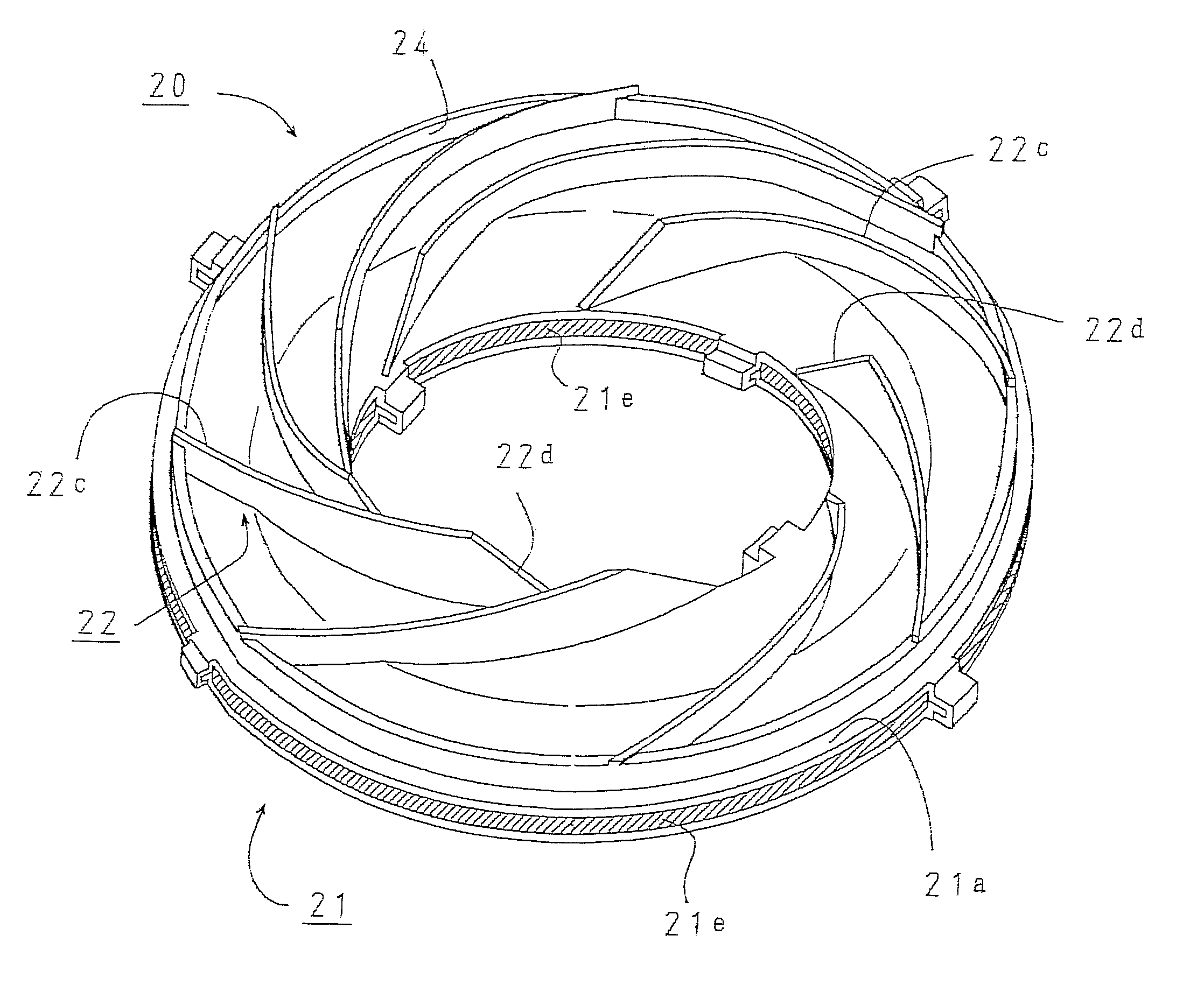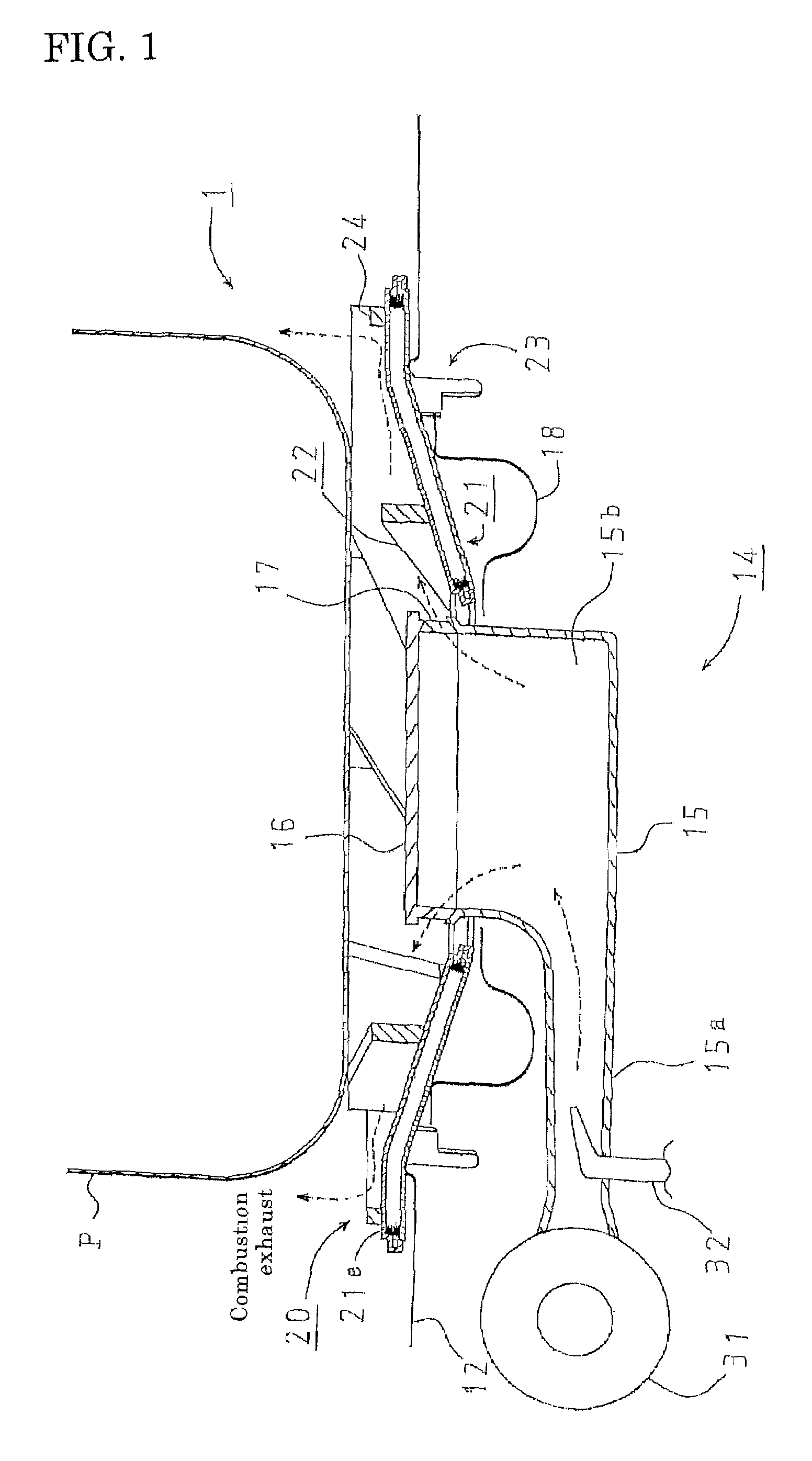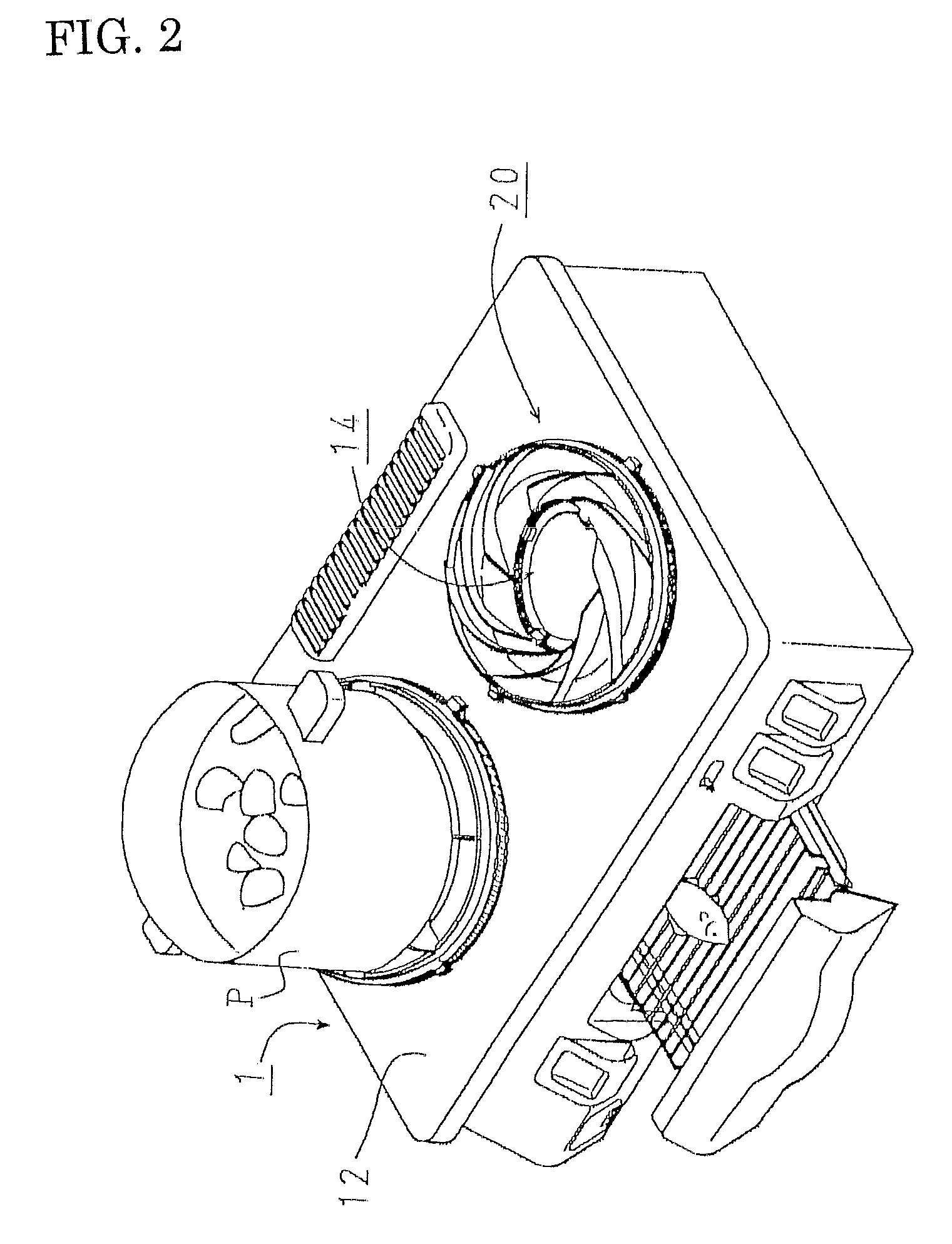Cooking stove
a stove and cooking technology, applied in the field of cooking stoves, can solve the problems of reducing the heating efficiency of combustion gas, so as to prevent the temperature decline of combustion gas, improve heating efficiency, and maintain the jetting speed fast
- Summary
- Abstract
- Description
- Claims
- Application Information
AI Technical Summary
Benefits of technology
Problems solved by technology
Method used
Image
Examples
first preferred embodiment
[0089]In a gas table 1 as a cooking stove, as shown in FIG. 1 and FIG. 2, an opening is arranged in a top plate 12, and at the center position of the opening, a cylindrical burner 14 is arranged, and a drip plate 18 is put around the burner. Above around the burner 14, a trivet 20 for putting a cooking container P thereon is arranged.
[0090]The burner 14 is an all primary air type burner that takes in almost of all the air necessary for combustion as primary air, and has a burner main body 15 that mixes fuel gas and combustion air, and a burner head 16 that is put onto the burner main body 15.
[0091]In the burner main body 15, at the upstream end, an air supply fan 31 for supplying combustion air is connected, and in the course of the air supply route, a gas nozzle 32 that jets out fuel gas is arranged. At the downstream of the gas nozzle 32, a mixing pipe 15a for mixing the fuel gas and the combustion air is formed. Further, at the head of the burner main body 15, a cylindrical mixin...
second preferred embodiment
[0137]Next, a gas table according to a second preferred embodiment is explained hereinafter. Meanwhile, portions different from the first preferred embodiment are explained, and an identical code is allotted to the point duplicated with the first preferred embodiment, and explanations thereof are omitted.
[0138]In the gas table 1 according to the second preferred embodiment, with regard to the shape of the trivet claws to load the cooking container thereon, as shown in FIG. 8 through FIG. 10, an arc portion 22e is arranged between the inclined portion 22d and the cooking container loading portion 22c.
[0139]The upper end surface of the arc portion 22e is arranged so as to become higher from the inside end to the external direction, and is concaved downward.
[0140]In general, the cooking container P is round at the bottom.
[0141]In the case where the cooking container P having a round bottom surface is put on the cooking container loading portion 22a of the trivet claws 22 whose upper e...
PUM
 Login to View More
Login to View More Abstract
Description
Claims
Application Information
 Login to View More
Login to View More - R&D
- Intellectual Property
- Life Sciences
- Materials
- Tech Scout
- Unparalleled Data Quality
- Higher Quality Content
- 60% Fewer Hallucinations
Browse by: Latest US Patents, China's latest patents, Technical Efficacy Thesaurus, Application Domain, Technology Topic, Popular Technical Reports.
© 2025 PatSnap. All rights reserved.Legal|Privacy policy|Modern Slavery Act Transparency Statement|Sitemap|About US| Contact US: help@patsnap.com



